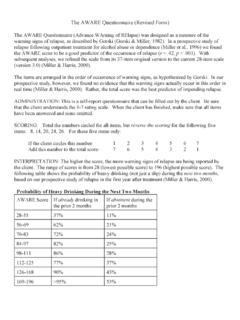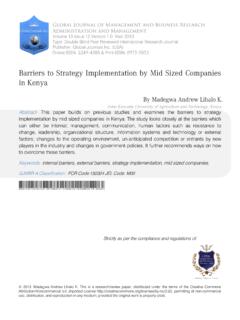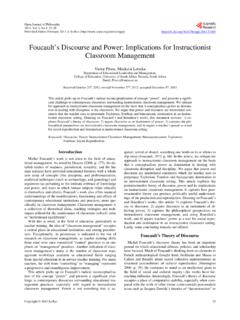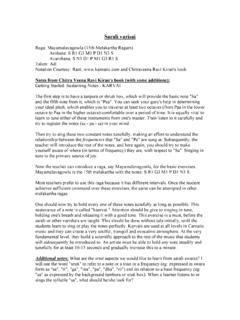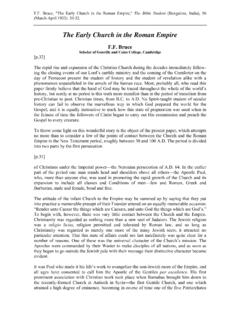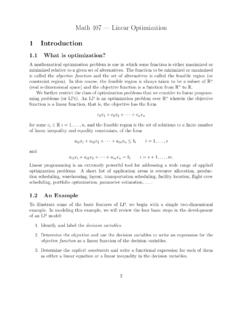Transcription of Motivational Interviewing Knowledge Test
1 Motivational Interviewing Knowledge Test Theresa B. Moyers, Tim Martin, and Paulette Christopher 2005 Choose the best answer for each of the following questions. Each question has only one correct answer. 1. Which of the following is NOT consistent with the MI approach to counseling? a) Rolling with resistance b) Avoiding argumentation c) Confronting denial d) Supporting self-efficacy 2. Within the MI framework, advice may be given by a therapist to a client a) at any time b) when the client requests it c) after the therapist receives permission to give it d) never e) both a and b f) both b and c 3. According to Miller and Rollnick (1991), when a therapist argues that a client s behavior needs to change, the client often responds by a) accepting the need for b) arguing against change. c) asking for advice. d) moving to the next stage in the process of change. e) all of the above 4. Two strategies which are usually effective for avoiding the confrontation-denial trap are a) giving advice and reflective listening b) reflective listening and eliciting self- Motivational statements c) skills training and warning d) aversive conditioning and supporting self-efficacy 5.
2 The MI approach is a) completely non-directive b) highly authoritarian c) directive but client-centered d) primarily educational e) all of the above 6. In order to develop discrepancy, therapists using the MI approach a) inform clients about the harmful effects of their behavior b) direct clients to stop the problem behavior c) warn clients about the future consequences of their behavior d) point out differences between the client s own stated goals and current behavior. e) none of the above 7. According to Miller & Rollnick (1991), resistance is best seen as a) a trait of difficult clients b) a healthy assertion of independence c) a function of a mismatch between the client s stage of change and the therapist s strategies d) an indicator of poor prognosis which, if persistent, indicates that the client should be dropped from counseling. e) none of the above 8. Within the MI framework, ambivalence about change on the part of the client is seen as a) normal and useful b) a major roadblock to change c) pathological d) irrelevant 9.
3 Which of the following therapist behaviors is NOT a roadblock to a client s self-expression: a) interpreting or analyzing b) warning c) reflecting d) reassuring, sympathizing or consoling 10. Within the MI framework, individual client assessment is seen as a) a stumbling block to change b) an unnecessary distraction since the only effective treatment is already known c) a vital part of determining a client s needs d) a dehumanizing and authoritarian exercise. 11. Which of the following is NOT an MI-consistent strategy for handling resistance? a) simple reflection b) amplified reflection c) argument d) reframe e) emphasizing personal control Please read this exchange between counselor and client and answer the questions that follow 1- C: I know I messed up. I ruined my family, my wife hates me, I got fired from my job, and now I just feel so hopeless. I m sad all the time, and it s like I can t do anything about it.
4 2- T: Where did you work? 3- C: Joe s Auto. I just felt lost there all day, like I didn t want to be there. 4- T: Did your boss know you were drinking? 5- C: Yeah, when he fired me, he told me he could smell the alcohol. God, he must really think I m a loser. 6- T: What you are is an addict. 7- C: I m not addicted, ok. I just need a few beers after work to calm down. 8- T: No, you are an addict. You have to admit you are powerless over it before you can better. 12. Therapist statement #2 represents a) a failure to express empathy b) a failure to develop discrepancy c) a failure to explore ambivalence d) all of the above e) none of the above 13. Therapist statements #2 and #4 indicate which MI trap? a) Labeling trap b) Q-A trap c) Expert trap d) Premature focus trap e) Blaming trap 14. Therapist statement #6 reflects which MI trap? a) Labeling trap b) Q-A trap c) Expert trap d) Premature focus trap e) Blaming trap 15.
5 Therapist statement #8 represents a) a confrontation of denial b) an accurate reflection c) a failure to roll with resistance d) both a and b e) both a and c For the following exchange between client and therapist, answer the questions below 1- T: What would you like to discuss today? 2- C: Look, the judge said I gotta come here, but I don t think I need to be here, so don t expect me to cooperate with you. 3- T: You feel that things are fine. 4- C: I m not saying that everything is perfect, but I m not a dope fiend. 5- T: Do you feel that others see you that way? 6- C: Yeah! People at work are always on my case about it, saying I m gonna die someday from it. They just need to mind their business. 7- T: Sounds like they re concerned. 8- C: Yeah, well, I guess. 16. Therapist statement #3 is a demonstration of a) the MI trap of labeling b) the MI trap of premature focus c) the MI principle of rolling with resistance d) the MI principle of expressing empathy e) both c and d 17.
6 This therapist is using which opening strategy? a) listen reflectively b) affirm c) summarize d) all of the above 19. A therapist who responds to a client's reluctance to accept the label of alcoholic by saying, "I've been in this business for fifteen years and I know an alcoholic when I see one" has fallen into: a) the reflection trap b) the authenticity mode c) the expert trap d) the Motivational Interviewing mode 20. The importance and confidence rulers are: a) a means of assessing client readiness b) a intervention that is inconsistent with MI c) used only with clients who are in the action stage of change d) a way of rolling with resistance 21. According to Miller and Rollnick (2002), a therapist should respond to client change talk in all of the following ways, except by: a) elaborating on the change talk with an open question b) reflecting the client s change talk c) asking the client to commit to a treatment plan d) summarizing the client s language 22.
7 The purpose of querying extreme consequences of maintaining behavior is: a) to elicit the cons of behavior change (Counter change talk) b) to warn the client about negative consequences of their behavior c) to elicit the pros of behavior change (Self-motivating statements) d) to scare the client straight 23. What would be the best therapist response to elicit change talk in the following situation? T: How confident are you on a scale of 0 to 10 that you can make this change? C: About a 4. a) So, you re about a 4. b) why are you a 4 and not a 0? c) you ve got some confidence, but not a lot. d) why are you not a 10?





